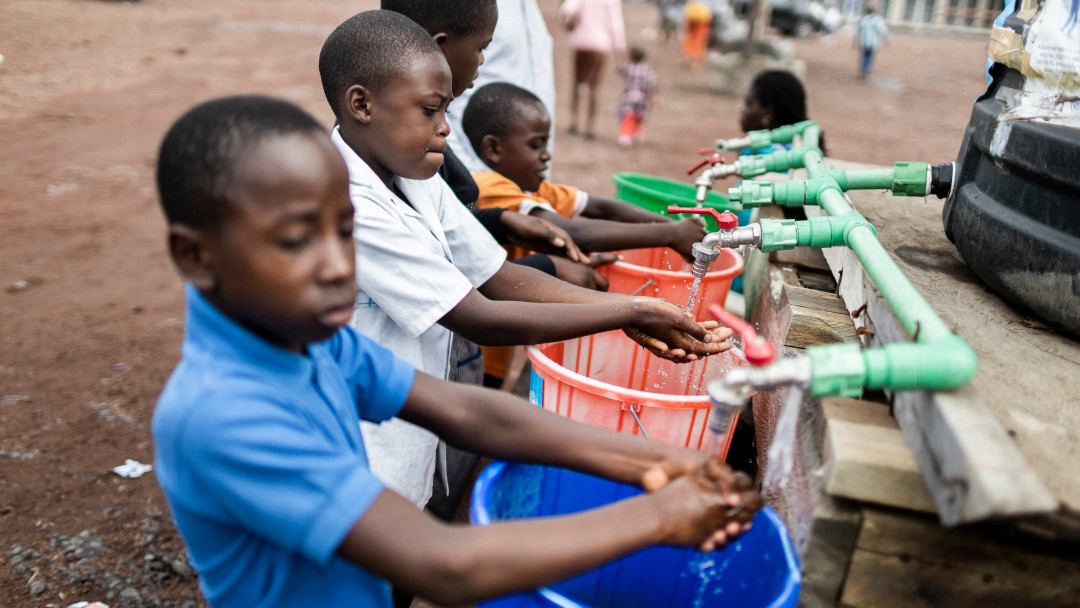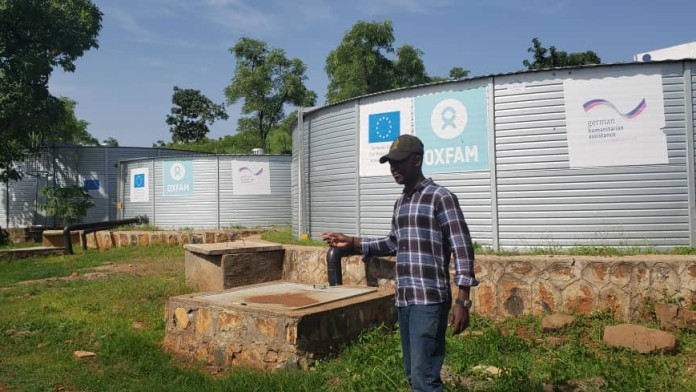

Sub-Saharan Africa hosts more than a quarter of the world's refugees, and the trend is rising. The refugees mostly migrate within the continent, many of them even within their region. The Horn of Africa and Great Lakes region is currently home to 4.6 million refugees and asylum seekers, most (over 4 million) from South Sudan, Somalia, Sudan and Burundi. Another 8.1 million people are internally displaced in the region due to conflict and natural disasters, and many have been living as refugees for years. Yet most refugee camps have only been planned for a transitional phase. This increases pressure on infrastructure, especially water and sanitation (WASH) in host communities - and leads to significant health risks for all residents. In many camps and communes, residents have less than 20 litres of water per day.
The administration of the camps and the provision of basic services to the refugees is often delegated by the local government to the United Nations High Commissioner for Refugees (UNHCR). The basic provision of refugees, which is detached and isolated from government systems - usually with tankers - is relatively expensive and unsustainable. And: in order to avoid distribution conflicts between the local population and refugees who have moved in, it is important to provide all population groups with adequate water and sanitation services. A project in the Gambella region (Ethiopia) for South Sudanese refugees and host communities shows that piped drinking water supply is significantly cheaper than supply by truck after only a short time.
UNICEF and UNHCR have designed sustainable programmes in cooperation with KfW Development Bank. The R-WASH projects (R stands for "regional") include investments in water and sanitation infrastructure for host communities, refugees and internally displaced persons, as well as support for the establishment of efficient local water supply companies.
In a first - three-year - phase, water supply systems and sanitation facilities will be built and expanded in three to four locations in Ethiopia, Sudan, Somalia and possibly Uganda. The total costs for this phase amount to 32 million euros. The integrated supply for refugees and host communities is intended to prevent distribution conflicts and promote peaceful coexistence. In this way, the infrastructure can contribute to conflict reduction and stabilisation in the long term and - especially in fragile regions - strengthen trust in state institutions. After all, a state that can ensure basic infrastructural services for the population enjoys legitimacy.
Extensive accompanying measures support local water suppliers in ensuring the most cost-efficient and sustainable operation possible - also in the long term. In addition, short-term measures to contain COVID-19 will be implemented, such as public hand-washing facilities. Residents will be closely involved in the implementation of all measures.
All construction measures will be implemented in fragile regions - or at least in the vicinity of such areas. These regions are often characterised by inter-ethnic conflicts and/or terrorist attacks. For this reason, site-specific context analyses are carried out in addition to the environmental and social impact assessments.
A special feature: the independent evaluation unit together with the operational team and the centre of competence for Peace and security of KfW Development Bank will conduct a "monitoring evaluation" in parallel with the project. This is based on a background analysis that includes all scientific publications since 2015 that examine the connection between the provision of (WASH) infrastructure and social cohesion. The 16 studies examine the long-term effects of interventions with infrastructure components that were implemented in fragile regions and countries and promoted by actors such as the United Nations as well as NGOs. Central question: What would have happened if the beneficiaries of the project had not benefited from the project during the same period? How would their lives have been without the project?
The results can strengthen synergies in learning - both among development partners and partners in the field - that will benefit future projects.
Share page
To share the content of this page with your network, click on one of the icons below.
Note on data protection: When you share content, your personal data is transferred to the selected network.
Data protection
Alternatively, you can also copy the short link: kfw-entwicklungsbank.de/s/enzBYJXA
Copy link Link copied